


While getting the blood pumping and burning calories is important, focusing on mental well-being is just as crucial, as it directly impacts physical health. This is where somatic movement comes in.
Somatic exercises emphasize the mind-body connection similar to yoga, and you don’t need any special skills or equipment to try them. These movements can help relieve stress, manage trauma, and offer a variety of other benefits, promoting a sense of ease and relaxation [1]. In this article, we’ll explore the many ways somatic exercises can be helpful, as well as some of the best movements for you to try!
What Are Somatic Exercises?
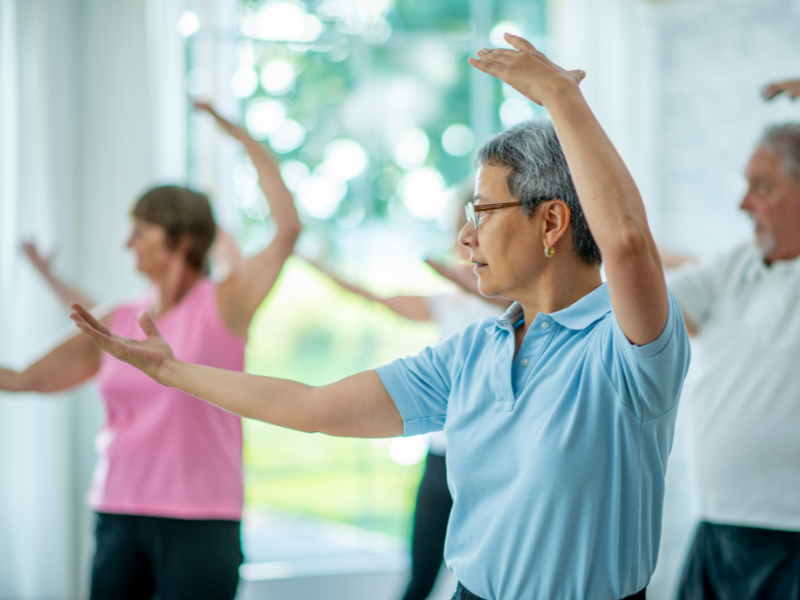
Somatic exercises involve movement that emphasizes internal awareness and connection to the body. Rather than following an instructor’s lead or focusing on achieving a specific result, somatic movement is guided by what feels supportive and comfortable in the individual’s body. The term “somatics” was coined by Thomas Hanna, Ph.D., who defined it as the study of the human body from a first-person perspective—essentially, the practice of self-awareness [2].
Somatic workouts prioritize slow, intentional movements such as freestyle stretching or gentle yoga, without pushing the body to the point of pain. These exercises help individuals tune into their bodies, release built-up emotions, manage trauma, and support mental well-being.
Common forms of somatic movement include breathwork, yoga, and dance—any activity that encourages inward focus and mindful movement. The goal is not to improve strength or fitness per se, but to foster internal connection and awareness, promoting relaxation, emotional release, and overall health.
For more yoga-based exercises:
10 Easy Yoga Mat Workout to Build Strength
Face Yoga Exercises PDF: The Ultimate Guide
Benefits of Somatic Exercises
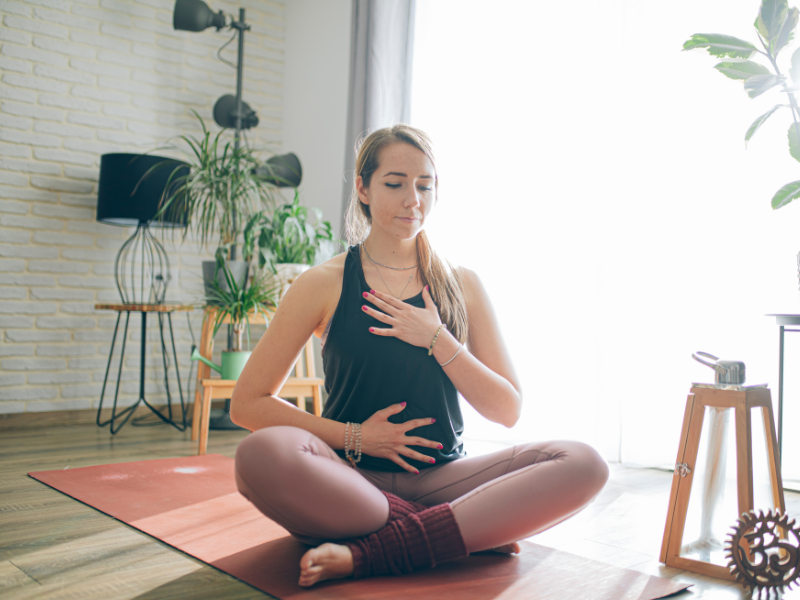
Below are some of the many ways in which somatic exercises can have a positive impact on your mental health and physical well-being:
- Regular practice enhances posture, flexibility, balance, and range of motion, reducing injury risk and supporting healthy aging. Somatic exercises also increase body awareness, helping individuals recognize and address physical pain, such as tightness or tension, which promotes early intervention.
- Somatic movement’s mindful nature helps release physical and psychological tension, with the exercises promoting relaxation and reducing stress. It also allows for the release of stored emotions like grief, shame, trauma, and even post-traumatic stress disorder [3]. This helps with the overall mind-body connection.
- By increasing awareness of the body, physical symptoms, and its sensations, somatic movement can reduce the perception of pain and support chronic pain management.
- Slow, deliberate movements help calm the nervous system, relieve muscle tension, and improve sleep quality [4].
- By encouraging internal awareness, somatic exercises support a more mindful and intentional approach to daily life, enhancing overall well-being.
Types of Somatic Therapy Techniques and Movements
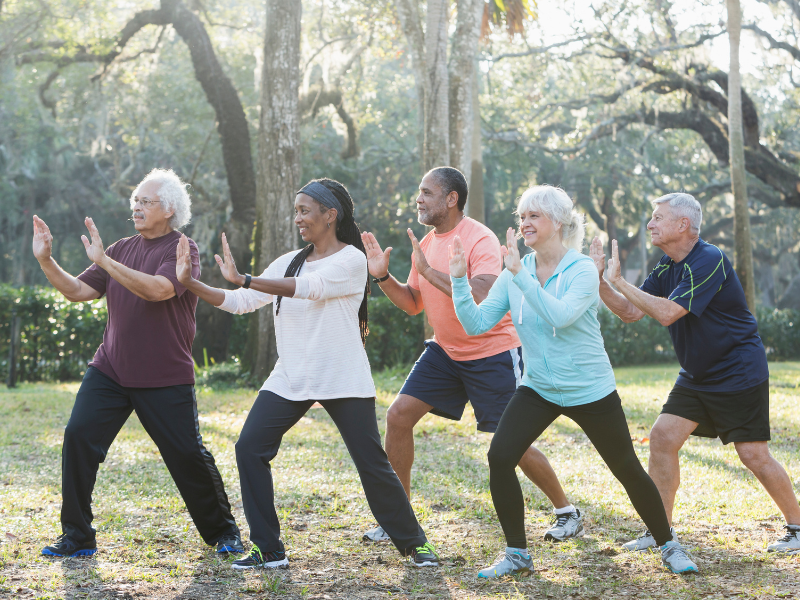
Any movement that is deliberate and helps forge a connection between the mind and the body can come under somatic movement. You can also refer to a somatic movement therapist and below are some of the most popular types of somatic therapy techniques:
- Somatic stretching
- Yoga
- Pilates
- Some forms of dancing exercises
- Mindful walking exercises
- Tai chi
- Breathwork
Somatic Exercises and Movements to Try
1. Corpse pose
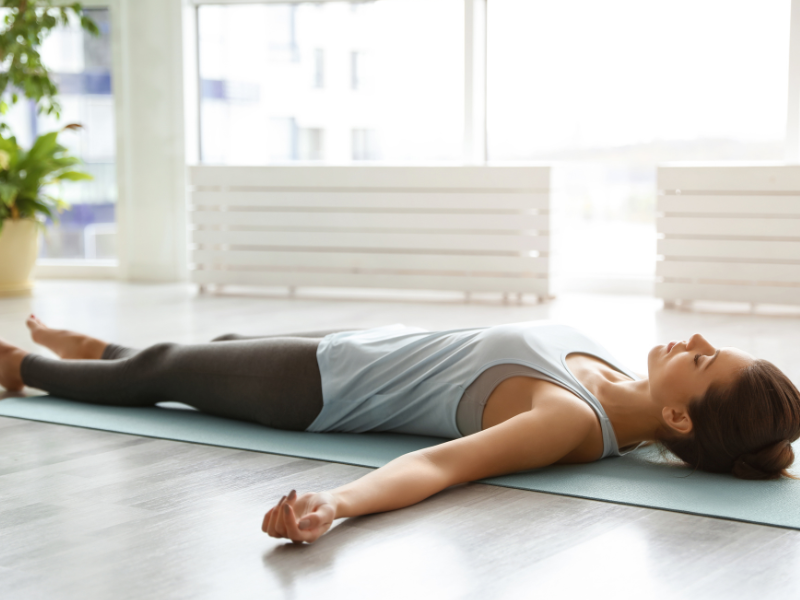
For better quality sleep, try this yoga exercise.
Instructions:
- Lie flat on your back with legs extended, feet hip-width apart, and arms at your sides, palms up. Align your head with your spine and relax your facial muscles.
- Ensure your body feels comfortable and free of tension. Breathe deeply and slowly, focusing on the rise and fall of your belly with each breath.
- Mentally scan your body from head to toe, consciously relaxing each part as you go.
- Remain in stillness for 5 to 15 minutes, allowing your body and mind to relax fully.
- To come out, deepen your breath, slowly move your fingers and toes, then roll to one side before rising.
2. Grounding

This is a technique that helps your mind stay still and connect to the natural and physical world.
Instructions:
- Stand tall with your feet firmly grounded, barefoot if possible for better comfort.
- Take a few deep breaths, focusing on the connection between your feet and the floor.
- Visualize roots extending from your feet, anchoring you to the earth. Gently shift your weight from side to side, like a swaying tree.
- Then shift your weight forward and backward. Place your hands on your lower belly to feel your center.
- Continue swaying while keeping your hands on your belly, staying connected to your core.
You may also like other stress-releasing workouts:
Recover and Restore Relax Workouts
3. Seated Twists
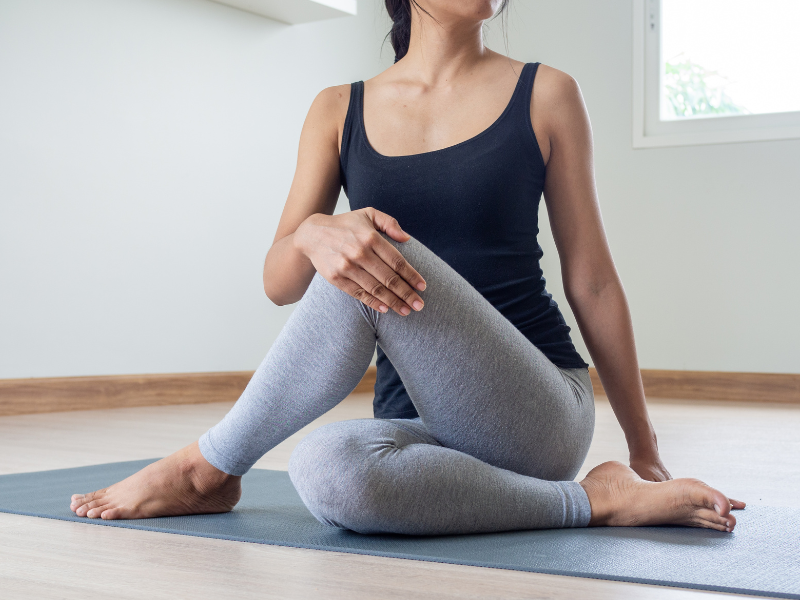
This exercise is great for relieving stress and aches in the neck and shoulders, and for better posture and spine alignment.
Instructions:
1. Sit tall with your legs crossed or feet flat on the floor, spine straight.
2. Place your right hand on your left knee and your left hand behind you on the floor or chair for support.
3. Inhale to lengthen your spine, then exhale and gently twist your torso to the left, keeping your chest open.
4. Hold the twist for a few breaths, deepening the stretch with each exhale.
5. Slowly return to center on an inhale. Repeat on the other side.
4. Body Scanning

Try this technique for enhanced body awareness that goes towards helping identify where discomfort or tension occurs in the body.
Instructions:
- Lie down or sit in a relaxed position.
- Begin by mentally scanning your body, starting from your toes and gradually working your way up to your head. Pay attention to any areas of tension or discomfort as you go.
- When you notice tension in a specific area, pause and focus on it. Take a deep breath in, and as you exhale, consciously allow that area to relax.
- Once the tension has eased in one area, gently move on to the next, continuing the process of scanning and releasing tension.
- Continue this body scan until you’ve reached your head, ensuring each area is relaxed and at ease
5. Tree Pose
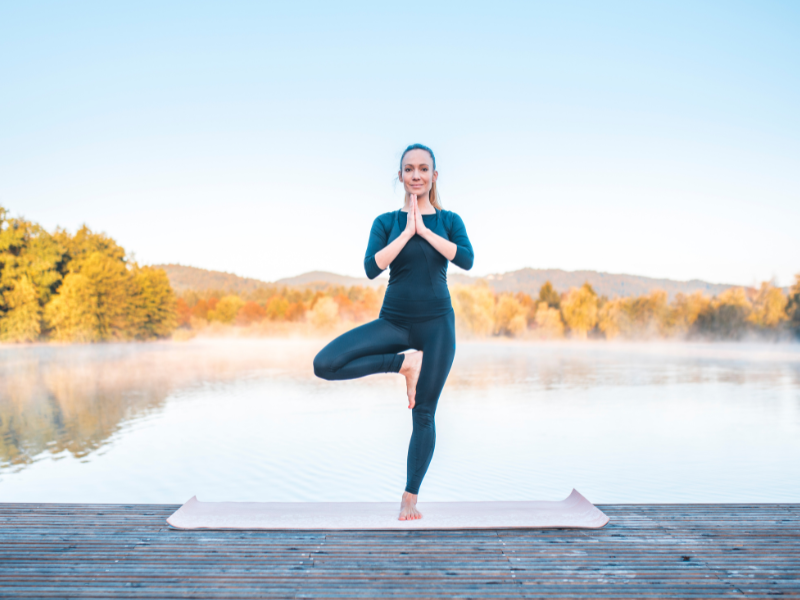
This is a pretty common yoga pose that stretches many parts of your body while testing your balance and posture. The connection comes from being more grounded.
Instructions:
- Stand firmly on both feet.
- Shift your weight to the left foot and lift your right foot off the ground.
- Place your right foot on your left shin or thigh (avoid the knee).
- Bring your palms together in front of your heart, extend your arms overhead, or use a wall for support.
- Hold for a few breaths, then slowly release your foot. Switch sides.
For more low-intensity workout routines:
6. Voo Breathing
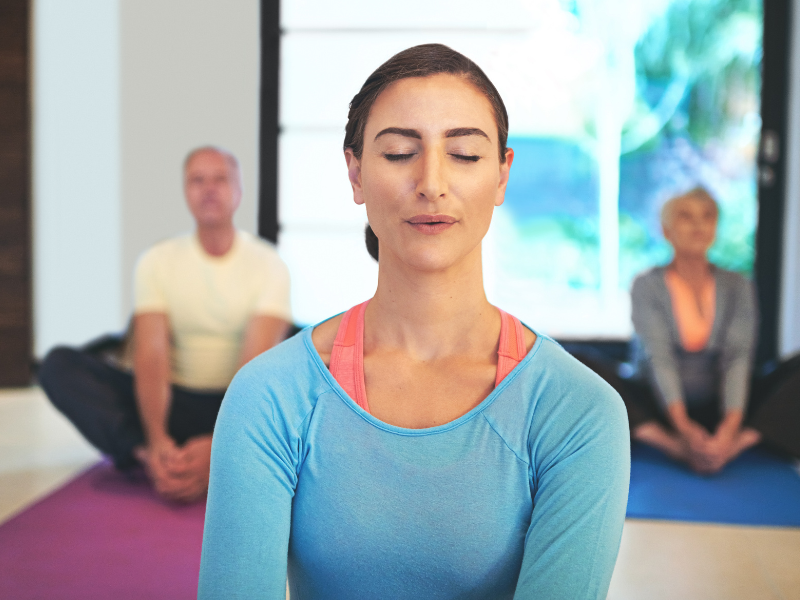
Breathwork is an important movement under somatic yoga, and the Voo Breathing exercise is a great example. It activates the vagus nerve which supports relaxation and helps in coming out stress response.
- Sit in a relaxed posture, with your eyes either open or closed, whichever feels most comfortable.
- Gently direct your attention to your natural breathing, without trying to change it in any way.
- Breathe in deeply through your nose, allowing your lungs to fill gradually.
- Release the breath slowly through your mouth while producing a “voo” sound, letting the sound originate from deep in your abdomen.
- After each exhale, take a moment to notice how your body feels and any sensations that arise.
- Continue the process for another 1 to 3 rounds, maintaining your focus on the breath and the calming effects.
Conclusion
We hope you’re now motivated to try out somatic exercises after learning about all the benefits for your physical and mental well-being. Aspects like emotional awareness and trauma healing are often neglected when it comes to taking care of the body and mind, but they certainly impact the quality of life you lead. For more tips on how you can live an active and spirited lifestyle, check out the JustFit app!
What is an example of a somatic exercise?
Do somatic exercises really work?
What are somatic exercises to release trauma?
What is the difference between yoga and somatic exercises?
How can I do somatic therapy by myself?
Brom, D., Stokar, Y., Lawi, C., Nuriel-Porat, V., Ziv, Y., Lerner, K. and Ross, G. (2017), Somatic Experiencing for Posttraumatic Stress Disorder: A Randomized Controlled Outcome Study. JOURNAL OF TRAUMATIC STRESS, 30: 304-312. Available at: https://doi.org/10.1002/jts.22189
Hanna, T. (1986). What is somatics?. Somatic Systems Institute. Available at: https://somatics.org/library/htl-wis1
Mayo Foundation for Medical Education and Research. (2024c, January 24). Relaxation techniques: Try these steps to lower stress. Mayo Clinic. Available at: https://www.mayoclinic.org/healthy-lifestyle/stress-management/in-depth/relaxation-technique/art-20045368
Salamon, M. (2023, July 7). What is somatic therapy?. Harvard Health. Available at: https://www.health.harvard.edu/blog/what-is-somatic-therapy-202307072951





